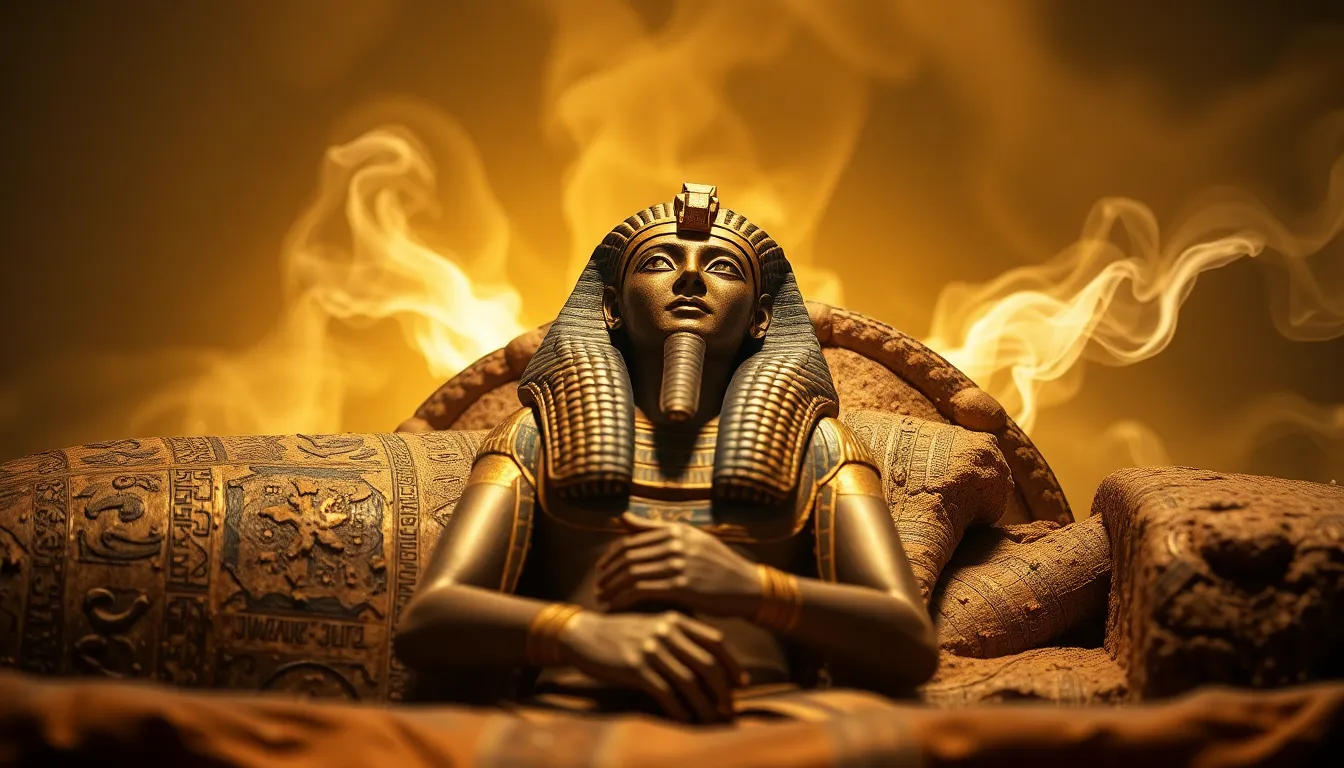The Role of Funerary Literature in Mummification
I. Introduction
Funerary literature refers to a collection of texts that were created to assist the deceased in navigating the afterlife. These texts often include spells, prayers, and instructions aimed at ensuring a safe passage to the realm of the dead. In ancient cultures, particularly in Egypt, mummification was a prevalent practice that involved preserving the body for the afterlife. The significance of funerary texts in this process cannot be overstated, as they provided the necessary guidance and protection for the deceased’s journey beyond death.
II. Historical Context of Funerary Literature
The origins of funerary texts can be traced back to early civilizations, with the most notable examples found in ancient Egypt. These texts evolved over time, reflecting the changing beliefs and practices surrounding death and the afterlife.
Key points regarding the historical context include:
- Origins: Funerary literature emerged alongside the development of complex societies, where beliefs about the afterlife began to take shape.
- Evolution: Texts varied across cultures; for instance, while Egyptian funerary literature focused on the afterlife journey, Mesopotamian texts often emphasized the judgment of the dead.
- Relationship with Afterlife Beliefs: These texts were deeply intertwined with cultural beliefs about death, influencing how societies approached mummification and burial rituals.
III. Types of Funerary Literature
Funerary literature in ancient Egypt can be categorized into several key texts:
A. Pyramid Texts: Significance and Content
The Pyramid Texts are among the oldest religious texts in the world, dating back to the Old Kingdom (circa 2686–2181 BCE). They were inscribed on the walls of royal tombs and served to protect the pharaoh in the afterlife.
B. Coffin Texts: Transition from Royal to Commoner Use
Emerging during the Middle Kingdom (circa 2055–1650 BCE), Coffin Texts expanded the access to funerary literature beyond royalty. These texts were inscribed inside coffins and included spells and rituals to help anyone reach the afterlife.
C. Book of the Dead: Its Role in Guiding the Deceased
Compiled during the New Kingdom (circa 1550–1070 BCE), the Book of the Dead became the most famous funerary text. It consisted of a collection of spells and illustrations intended to guide the deceased through the underworld, facing challenges and securing a favorable judgment from the gods.
IV. Funerary Literature and the Mummification Process
Funerary texts played a crucial role in the mummification process, providing essential instructions and rituals.
- Instructions for the Afterlife: Many texts contained specific spells that instructed the deceased on how to navigate the afterlife.
- Rituals and Spells: Certain spells were recited during the mummification process to protect the body and soul.
- Functions of Literature: These texts were believed to ensure the deceased’s safe passage and successful resurrection, highlighting their integral role in the mummification rituals.
V. Symbolism and Imagery in Funerary Texts
Funerary literature is rich in symbolism and imagery, reflecting the cultural beliefs of ancient Egyptians.
A. Common Symbols Used in Funerary Literature
Symbols such as the ankh (symbol of life), scarabs (representing rebirth), and the feather of Ma’at (truth and justice) frequently appeared in these texts.
B. Cultural Beliefs about Death and Resurrection
The imagery often depicted scenes of the deceased being judged by Osiris, the god of the afterlife, illustrating the importance of moral conduct during their earthly life.
C. Role of Illustrations and Inscriptions
Illustrations and inscriptions served not only as decorative elements but also as vital components of the texts, intended to invoke divine protection and guidance for the deceased.
VI. Funerary Literature as a Historical Source
Funerary literature provides invaluable insights into ancient beliefs and practices.
- Insights into Ancient Beliefs: These texts reveal how ancient Egyptians viewed death, the afterlife, and their relationship with the divine.
- Social Structures: The content of funerary texts reflects the roles and statuses within society, indicating a clear hierarchy in burial practices.
- Preservation of Language and Culture: Many of these texts have been preserved, offering linguists and historians a glimpse into the language and culture of ancient Egypt.
VII. Modern Interpretations and Relevance
The impact of funerary literature extends into contemporary times, influencing modern funerary practices and our understanding of ancient cultures.
- Contemporary Funerary Practices: Some modern cultures incorporate elements of ancient rituals, showcasing the lasting influence of these texts.
- Relevance in Archaeology and Egyptology: Funerary literature continues to be a focal point for researchers, providing context and understanding of ancient Egyptian civilization.
- Lessons on Death and Remembrance: Modern readers can learn about ancient attitudes toward death, which can influence current perspectives on mortality and remembrance.
VIII. Conclusion
In summary, funerary literature plays an essential role in the mummification process, serving as a guide for the deceased and reflecting the rich cultural beliefs of ancient civilizations. The legacy of these texts endures, providing us with deep insights into the values, hierarchies, and spiritual beliefs that defined ancient Egyptian society. Understanding the interplay between death, literature, and cultural identity not only enriches our comprehension of history but also connects us with the timeless human experience of seeking meaning in life and death.




